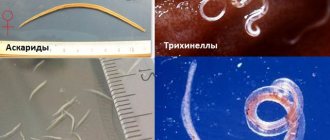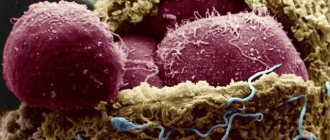#!RentgenNA4ALO!#
Patients with suspected pathologies and diseases of the pelvic organs are prescribed various examinations and various diagnostic methods are used. These include: ultrasound examination, radiological examination, diagnostic laparoscopy, hysterosalpingography, etc.
The type and number of tests and diagnostic methods are prescribed individually, in accordance with the indications and medical history. Each method has its own characteristics of indications, implementation and results.
Hysterosalpingography (HSG)
What is hysterosalpingography? HSG is a research method that allows you to carefully examine the inner surface of the uterus and fallopian tubes. It provides maximum information for congenital or acquired diseases that are accompanied by changes in the structure of these organs. To do this, a series of x-ray images are taken.
HSG is prescribed if the following diseases and pathologies are suspected:
- congenital anomalies of the development of the internal female genital organs;
- obstruction of the tubes after inflammatory processes or an abortion;
- benign and malignant neoplasms;
- to diagnose tubal infertility in a patient after excluding hormonal causes (including before IVF);
- specific inflammatory processes (tuberculosis, syphilis);
- isthmic-cervical insufficiency;
- a history of ectopic pregnancies;
- spontaneous abortion at any stage of pregnancy;
- pathologies of previous births.
Typically, HSG x-ray or hysteroscopy is performed on patients who have already undergone a complex of preliminary examinations (CBC, OAM, biochemical blood parameters, ultrasound of the pelvic cavity).
Contraindications for the test
HSG during pregnancy in gynecology is strictly prohibited. There is significant evidence of the negative effects of contrast, as well as x-ray radiation, on the fetus. Therefore, the only approved method for diagnosing pathology during this physiological state remains a standard ultrasound of the fallopian tubes. Also, HSG cannot be performed during lactation.
Also, an absolute contraindication to the study is the presence of any allergic reaction to drugs used as contrast. Many guidelines also strongly recommend performing a hypersensitivity test before initiating HSG.
Conducting research is also prohibited under a number of conditions:
- inflammatory processes in the patient’s genital organs;
- the presence of functional kidney or liver failure;
- decompensated cardiovascular diseases (coronary disease, congenital defects);
- any form of uterine bleeding;
- hormonal imbalances associated with thyroid diseases;
- increased tendency to form blood clots (thrombophilia, thrombophlebitis).
Relative contraindications to tubal HSG include inflammatory changes in general blood tests (leukocytosis, increased BER, increased number of neutrophils) and urine, and bacteriological examination of a vaginal smear.
Contraindications and restrictions
An absolute contraindication to hysterosalpingography is the period of pregnancy and lactation.
Contraindications to MSH:
- heart failure;
- thrombophlebitis;
- renal and liver failure (and other severe kidney and liver diseases);
- general infectious process in the body (ARVI, influenza, etc.);
- dysfunction of the thyroid gland (hyperthyroidism);
- any inflammation of the uterus, vagina and ovaries;
- vaginitis and vulvovaginitis;
- colpitis, bartholinitis, cervicitis;
- leukocytosis;
- high ESR;
- unfavorable urine test;
- individual intolerance to iodine (contrast contains iodine);
- heavy uterine bleeding.
Restrictions:
- to check the patency of the tubes and the condition of the cervical canal, salpingography is prescribed in the second phase of the cycle;
- if necessary, clarify the diagnosis of uterine endometriosis - in the first phase of the cycle, on days 7–8;
- if the patient needs to be examined for confirmation of uterine fibroids, the procedure can be performed in any phase except the period of menstruation.
Ultrasound hysterosalpingoscopy (USGSS)
Ultrasound hysterosalpingoscopy is actually a transvaginal ultrasound examination of the pelvic organs with the introduction of glucose, furatsilin or saline solution into the lumen of the uterus. Ultrasound hysteroscopy provides a dynamic image of the distribution of fluid in the uterine cavity and fallopian tubes.
This method has a number of advantages over GHA. Ultrasound hysterosalpingoscopy does not require the administration of contrast, which eliminates the possibility of allergic reactions and also reduces the list of contraindications. Also, this method does not expose the patient’s body to x-ray radiation. With ECHO HSG of the fallopian tubes, complaints of pain and a feeling of heaviness are less common.
Ultrasound hysterosalpingography, with so many advantages, also has its disadvantages. It visualizes the organ cavity worse, which reduces the informativeness of the diagnosis. The quality of the results depends on the qualifications of the diagnostician, which, if there are errors, has negative consequences in the future.
The essence of the procedure
Fallopian tube HSG is performed using X-ray equipment. Also, the study requires the introduction of a contrast agent into the cavity of the fallopian tubes. The purpose of diagnosis is to assess the patency of the tubes and identify the possible cause of female infertility.
This procedure is carried out according to strict indications in a gynecological hospital. An alternative diagnostic method is echohysterosalpingoscopy. This technique involves using an ultrasound machine instead of an x-ray.
Preparing for the study
Many patients are concerned about the question of how to prepare for HSG and USGSS so that the results of the study are as informative as possible. After prescribing the procedure, the attending physician carefully informs all of them about this.
Contrasting the uterus and fallopian tubes
Preparation for tubal HSG and hysterosalpingoscopy consists of several important steps. First, the gynecologist needs to conduct a general examination of the state of the main functional systems of the body. Additionally, the patient is tested for some common infectious diseases (AIDS, syphilis, gonorrhea). In the evening the day before the test, it is also recommended to perform a cleansing enema to remove feces from the intestines.
The study is carried out on days 5-10 of the menstrual cycle. This allows, on the one hand, to almost completely eliminate pregnancy in the patient, and on the other, a thinner endometrium contributes to less intensity of discomfort during the procedure and better visualization of organs.
On the day of an HSG or ultrasound to determine the patency of the fallopian tubes, it is necessary to thoroughly clean the patient’s external genitalia, as well as shave the pubic hair, as it may interfere with the examination.
The HSG procedure in gynecology involves the patient emptying her bladder immediately before the start of the study. It is also necessary to remove all metal jewelry and clothing in the genital and pelvic area. Hysteroscopy, on the contrary, requires that the patient have a full bladder before the examination.
On what day of the menstrual cycle can hysterosalpingography be done?
Tubal hysterosalpingography is performed on an outpatient basis. The patient is positioned in a radiolucent gynecological chair. The vulva is treated with an antiseptic solution. Spoon-shaped speculums are inserted into the vagina. Discharge is collected from the vaginal walls, after which the mucous membranes are treated with alcohol.
HSG cannot be called a pleasant and comfortable procedure, but there is no acute pain during it. As a rule, diagnosis is carried out without anesthesia. Local anesthesia with lidocaine is acceptable.
https://www.youtube.com/watch?v=sQuUWcUOi3E
Preliminary preparation
The procedure requires prior consultation with a gynecologist. The doctor prescribes a study after a detailed review of the patient’s medical history and risk assessment. To exclude contraindications, you will be referred for a general and biochemical blood test, smear culture, PAP test, tests for HIV, RW and hepatitis, and PCR diagnostics. It is important to exclude the presence of hidden infections in order to avoid their spread with the contrast agent poured out from the uterine cavity.
Preparation includes the use of barrier contraception from the end of the last menstrual period. Sexual rest is indicated 2 days before the study. For a week, you should avoid douching and suppositories (except those prescribed by your doctor). On the eve of the HSG, shave your pubic hair. Immediately before the procedure, you need to do a cleansing enema and empty your bladder.
The exact length of time for the procedure depends on the purpose of the study. To confirm the diagnosis of endometriosis, the procedure is prescribed on days 7-8 of the cycle. To determine the degree of patency of the fallopian tubes, an examination is scheduled for the second phase of the cycle. HSG can be performed at any phase of the cycle to detect the presence of uterine fibroids.
The most optimal time to conduct the study is the first two weeks after menstruation. During this period, the endometrium is still thin enough to provide free access to the mouths of the fallopian tubes.
Research methodology
X-ray examination of pipes for patency is carried out in a special room. The patient takes a place on a standard table for gynecological interventions. Both HSG and ultrasound examination of the patency of the fallopian tubes begin with an external examination by a specialist of the woman’s external genitalia, vagina and cervix using a gynecological speculum. After this, an antiseptic treatment is carried out and a catheter is inserted into the cervical canal through which a contrast agent is injected.
Introduction of saline solution into the uterine cavity and USGSS
The first image is taken after the injection of 2-3 ml of contrast. After a short period of time, a second portion of the substance is supplied, which facilitates its penetration into the lumen of the fallopian tubes. It is at this moment that the second photo is taken. With normal tubal patency, some contrast material enters the abdominal cavity. If necessary, a third picture is taken after 20-30 minutes.
Use of medications during the procedure
HSG is considered an almost painless procedure, as is ultrasound hysterosalpingoscopy. Therefore, anesthesia is used only for severe pain in a very small proportion of patients.
In some clinics, before the study, antispasmodics (drotaverine, papaverine) are additionally administered, which allows you to relax the cervix and avoid problems with inserting a catheter into the uterine cavity.
Side effects during HSG
Checking the patency of the fallopian tubes using contrast may be accompanied by the development of side effects, although in general the procedure is considered absolutely safe. About a third of patients note discomfort in the abdominal area, which sometimes turns into nagging or aching pain.
The most dangerous complication of the procedure is the development of local and general allergic reactions of varying severity. Cases of anaphylactic shock with systemic hemodynamic disturbances have been described. Therefore, medical personnel approach this procedure with special attention and caution.
If the research methodology is violated, traumatic damage to the uterine mucosa by the catheter is possible, which is clinically manifested by bleeding from the vagina.
How is the patency of the fallopian tubes checked?
At the time of HSG, the patient is positioned on the couch.
When the procedure is carried out using x-rays, the equipment is located above it. When an ultrasound is performed, the specialist uses a vaginal sensor.
Before inserting the catheter, the doctor applies an antiseptic to the vulva, vagina and cervix.
Research results
Hysteroscopy allows for a thorough examination of the uterine cavity and fallopian (uterine) tubes. The radiologist obtains high-quality images of the anatomical structure of the patient’s internal genital organs. They can be used to visualize signs of congenital malformations, the consequences of inflammatory processes, and the presence of tumors. Hysterosalpingography cannot determine the type of oncological process; therefore, if it is detected, a biopsy with cytological examination is usually performed. Ultrasound hysterosalpingoscopy also provides information about the condition of the uterine walls and the presence of pathology in the myometrium.
Hysterosalpingography remains the leading and simple method for diagnosing the causes of tubal infertility and anomalies in the development of the internal genital organs in women. Along with it, ultrasound hysteroscopy is performed, which is characterized by less information content and greater subjectivity of the results, but has fewer contraindications.
A transcript of the results is usually sent to the attending gynecologist or given to the patient immediately after the study. They not only help to assess the patency of the fallopian tubes using ultrasound, but also determine further tactics for diagnosing and treating the patient.











